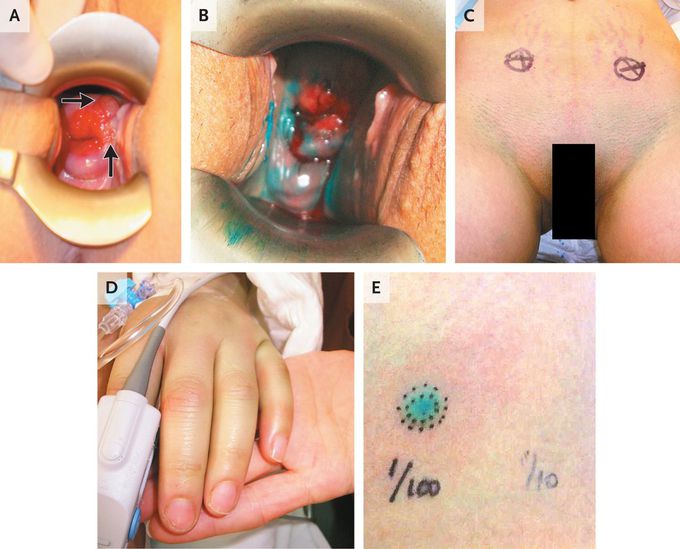


Anaphylaxis Associated with Blue Dye
A 33-year-old woman was admitted to the hospital for surgery for early squamous-cell cervical cancer (stage IB1, with a tumor <2 cm in diameter; Panel A, arrows). Magnetic resonance imaging showed neither lymphadenopathy nor paracervical involvement. The patient was taken to the operating room for radical trachelectomy and sentinel-node and pelvic lymphadenectomy. After receiving 4 ml of technetium-99m and blue dye for detection of the sentinel node (Panel B), she became cyanotic and hypotensive, with accompanying swelling of the glottis, facial and acral edema, and rash (Panels C and D). Anaphylaxis was suspected, and the patient was treated with vasoactive drugs and glucocorticoids and underwent mechanical ventilation. Her level of serum tryptase, a marker of anaphylaxis, was 11.9 μg per liter (reference range, <10 μg per liter). Surgery was deferred, and the patient was transferred to the intensive care unit, where she recovered. A skin test for allergy to the dye was positive at dilutions of 1:10 and 1:100 (Panel E). The patient eventually underwent successful robot-assisted surgery and remains free of disease 12 months later.
Did you took her permission to post this here Follow medical ethics yar 🤦🏻♂️


